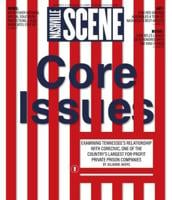
Vodka Yonic features a rotating cast of women and nonbinary writers from around the world sharing stories that are alternately humorous, sobering, intellectual, erotic, religious or painfully personal. You never know what you’ll find in this column, but we hope this potent mix of stories encourages conversation.
I’m the kind of person who tries to save everything. I pick up saturated worms on the street and move them to higher ground. But around the time I turned 40, leaving a long-term relationship with my ex-girlfriend, I had the experience of letting something die on my watch. That something? A generic houseplant.
I’ve done the desperate searches in the past, yielding results like “The Six Ways to Save a Dying Houseplant” and “Can You Bring a Dead Houseplant Back to Life?” I’ve clung to the idea of saving the browning heartleaf philodendron, neglected behind my laptop. I’ve moved a fern from bathroom to bedroom and back again. I’ve made tonics, repotted, pruned and inspected leaf by leaf. Every now and then, though, I choose to let a house plant die.
The last time I compassionately killed a plant, it was in conjunction with a breakup. My ex and I decided to separate after nearly seven years together. I wanted to build a family, and she no longer wanted to try for one. We couldn’t move out of our shared apartment immediately, so we spent a month living together and slowly separating our things, our routines, our lives and our plants.
The umbrella tree belonged to me before we were together. A friend’s son found it growing out of a cat-litter box in a dank basement — without light or much soil. It was the kind of plant that tells you it wants to live, despite the odds. My ex and I cared for it together. It moved with us into our first place. It grew heartily through the first few years of our relationship, despite being riddled with scale. I delicately wiped each leaf with alcohol-soaked cotton balls.
It was a slow-growing beauty, its green waxy leaves shooting out in starbursts from each stem, always a perky dark-green splash against our muted walls. It accepted bulb ornaments at Christmastime and long sabbaticals outside while we were on vacation. It accepted my puppy swatting at it and chewing on its leaves. The umbrella plant and I were connected in our commitment to survival. When my friend’s son — the one who found it — died in a tragic accident, the plant continued to grow, a bold foil to the devastating death of its finder.
During our last month in the apartment, the plant started to droop. Not leaves, but whole stems fell from the base stalk. I barely had time to sweep them from the floor before the next one fell. Stems fell when I walked by the plant in the hallway. Stems fell when the vacuum rumbled by.
As is probably the case with compassionate deaths in other species, I found advice about when to hold on and when to pull the plug contradictory. Some sources said I needed to repot, change locations, uncover my mistakes as a caregiver — or just give it more time. My ex supported these ideas, but ultimately left it up to me. A part of me wanted to do these things. The plant and I knew how to survive in adversity. We had been together through the years my partner and I discussed sperm donors and egg retrievals, and then when we ultimately decided to break up instead of moving forward with building a family. But I was also tired of surviving. I was leaving behind a partner of nearly seven years, moving into a tiny apartment by myself. So against the advice of the internet, I decided it was time I let the plant go.
As my ex and I cleaned out our home, slowly moving into our respective new places, I set the plant outside. It hung on through the dark days of winter rain. It lingered through the first snowfall. We passed it on the porch as we moved our furniture out of the apartment. We passed it as we moved the other plants and our dog to our new lives.
Perhaps it was cowardly, setting the plant outside. It had survived so much, maybe it could decide for itself if it wanted to live or die, but it never did. That was my job. I had to be the one to pull the plug.
When we cleaned the empty apartment, I pulled the plant from its pot and laid it in the compost bin. It looked content and settled in the bright-green bin, surrounded by the wet leaves and dead blackberry vines from our yard. Somehow it appeared more alive there — potless and soil-less and very much at home in that wild afterlife, ready to become the next best version of itself.
I couldn’t help but think I was doing what the plant wanted. The moving truck pulled away from the apartment with the contents of my former life. I followed close behind, leaving the umbrella plant tucked away — removed from the changes ahead.





